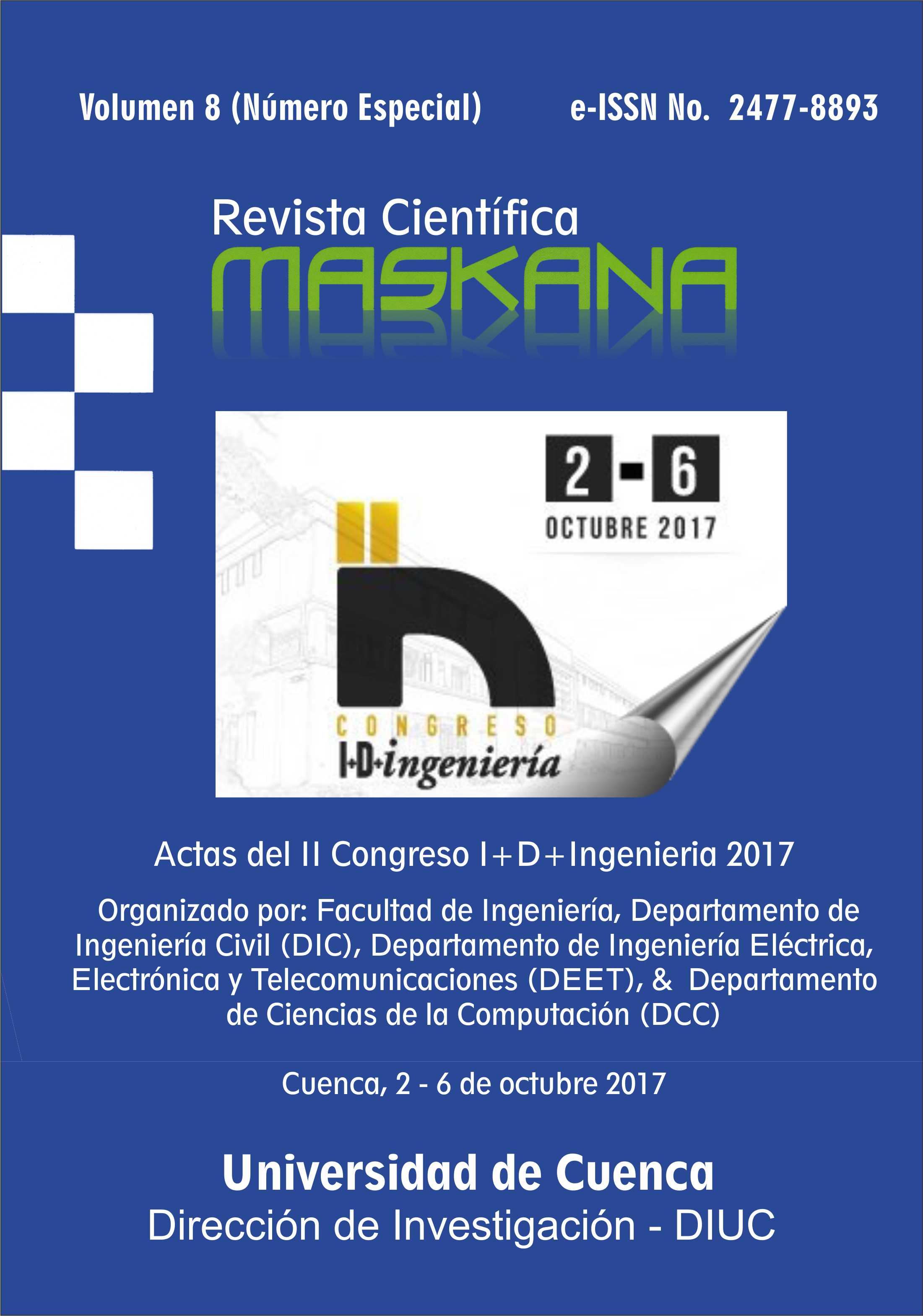Description languages for the lifecycle activities of services in the cloud domain: A systematic mapping protocol
Palabras clave:
cloud computing, protocolo de mapeo sistemático, lenguajes de especificación, ciclo de vida de servicioResumen
Las actividades del ciclo de vida de servicios requieren de los desarrolladores el razonamiento sistemático sobre sus aspectos relacionados. Lenguajes de especificación se utilizan en la ingeniería de software con el fin de mejorar la calidad y el tiempo de entrega de los sistemas de software, ofreciendo notaciones y abstracciones que facilitan el razonamiento sobre los diferentes aspectos en un problema de dominio. Entre diversos enfoques, que proponen lenguajes de especificación, nos interesan los que soportan y permiten el razonamiento analítico sobre las actividades del ciclo de vida de servicios en el dominio de desarrollo de aplicaciones en la nube. Este trabajo presenta un protocolo para el mapeo sistemático que provee una guía para determinar el estado del arte de los lenguajes de especificación que soportan las actividades del ciclo de vida del servicio en el dominio de aplicación en la nube, e identificar los problemas que esos lenguajes de especificación no han abordado.
Descargas
Métricas
Citas
Amazon Web Services. (n.d.). What is cloud computing?. Available at https://aws.amazon.com/what-is-cloud-computing/
Bergmayr, A., Wimmer, M., Kappel, G., Grossniklaus, M. (2014). Cloud modeling languages by example. IEEE 7th International Conference on Service-Oriented Computing and Applications. https://doi.org/10.1109/SOCA.2014.56
Bermayr, A., Grossniklaus, M., Wimmer, M. (Eds.) (2013). D9.1 State of the art in modelling languages and model transformation techniques. ARTIST. Technische Universität Wien (FP7-317859), 61 p. Available at http://www.artist-project.eu/sites/default/files/ D9.1%20SOTA%20in%20modeling%20languages%20and%20model%20transformationtechniques_M6_31032013.pdf
Bezivin, J. (2005). On the unification power of models. Software and System Modeling, 4(2), 171-188. https://doi.org/10.1007/s10270-005-0079-0
Bjørner, D. (2010). Software Engineering 1: Abstraction and Modeling.Software Engineering, Springer.
Brereton, P., Kitchenham, B. A., Budgen, D., Turner, M., Khalil, M. (2007). Lessons from applying the systematic literature review process within the software engineering domain. The Journal of Systems and Software, 80(4), 571-583. https://doi.org/10.1016/j.jss.2006.07.009
Dybå, T., Dingsøyr, T. (2008). Empirical studies of agile software development: A systematic review. Information and software technology, 50(9), 833-859. https://doi.org/10.1016/j.infsof.2008.01.006
Erl, T. (2008). SOA: Principles of service design. Prentice Hall Service, 106 p.
Gu, Q., Lago, P. (2007). A stakeholder-driven service life cycle model for SOA. IW-SOSWE '07 2nd international workshop on Service oriented software engineering: in conjunction with the 6th ESEC/FSE joint meeting, 7 p.
Hamdaqa, M., Livogiannis, T., Tahvildari, L. (2011). A eference odel for developing cloud applications. Proceedings of the 1st International Conference on Cloud Computing and Services Science, 98-103. https://doi.org/10.5220/0003393800980103
Infravio (n.d.). The definitive guide to SOA governance and lifecycle management. 49 p. Infravio Resource Center. Available at http://embedded-computing.com/news/infravio-guide-soa-governance-lifecycle-management/
Kitchenham, B. A., Charters, S. (2007). Guidelines for performing systematic literature reviews in software engineering, Version 2.3. EBSE Technical Report, Keele University, Germany.
Kitchenham, B. A., Dybå, T., Jørgensen, M. (2004). Evidence-based software engineering. Proceedings of 27th IEEE International Software Engineering Conference, IEEE Computer Society, pp. 273-281.
Leavitt, N. (2009). Is cloud computing really ready for prime time? Computer, 42(1). https://doi.org/ 10.1109/MC.2009.20
Littell, J. H., Corcoran, J., Pillai, V. (2009). Systematic reviews. The handbook of social work research methods. Oxford University Press, Inc. 202 p.
Mendes, E. (2005). A systematic review of web engineering research. International Symposium on Empirical Software Engineering, pp. 498-507. https://doi.org/10.1109/ISESE.2005.1541857
Petersen, K., Feldt, R., Mujtaba, S., Mattsson, M. (2008). Systematic mapping studies in software engineering. 12th International Conference on Evaluation and Assessment in Software Engineering, 17, pp. 1.
Petticrew, M., Roberts, H. (2006). Systematic reviews in the social sciences: A practical guide. 336 pp. Oxford, UK: Blackwell Publ.
Sun, L., Dong, H., Ashraf, J. (2012). Survey of service description languages and their issues in cloud computing. 8th International Conference on Semantics, Knowledge and Grids, 128-135. https://doi.org/10.1109/SKG.2012.49
Vaquero, L., Rodero-Merino, L., Buyya, R. (2011). Dynamically scaling applications in the cloud. ACM SIGCOMM Computer Communication Review, 41(1), 45-52. https://doi.org/ 10.1145/1925861.1925869
Venters, W., Whitley, E. A. (2012). A critical review of cloud computing: researching desires and realities. Journal of Information Technology, 27(3), 179-197.
Walker., E. (2009). The real cost of a CPU hour. Computer, 42(4). https://doi.org/ 10.1109/MC.2009.135
Wall, Q. (2006a). Understanding the service lifecycle within a SOA: Design time. Dev2Dev at dev2dev.bea.com/pub/a/2006/08/
Wall, Q. (2006b). Understanding the service lifecycle within a SOA: Run time. Dev2Dev at dev2dev.bea.com/pub/a/2006/11/
Descargas
Publicado
Cómo citar
Número
Sección
Licencia
Copyright © Autors. Creative Commons Attribution 4.0 License para cualquier artículo enviado a partir del 6 de junio de 2017. Para los manuscritos presentados anteriormente, se utilizó la licencia CC BY 3.0.
![]()
Usted es libre de:
 |
Compartir — compartir y redistribuir el material publicado en cualquier medio o formato. |
 |
Adaptar — combinar, transformar y construir sobre el material para cualquier propósito, incluso comercialmente. |
Bajo las siguientes condiciones:
 |
Atribución — Debe otorgar el crédito correspondiente, proporcionar un enlace a la licencia e indicar si se realizaron cambios. Puede hacerlo de cualquier manera razonable, pero de ninguna manera que sugiera que el licenciador lo respalda a usted o a su uso. |
| Sin restricciones adicionales: no puede aplicar términos legales o medidas tecnológicas que restrinjan legalmente a otros a hacer cualquier cosa que permita la licencia. |
Mayor información sobre este acuerdo de autoría y licencia, transferencia de derechos o solicitudes de reproducción, pueden ser consultados en este enlace.






